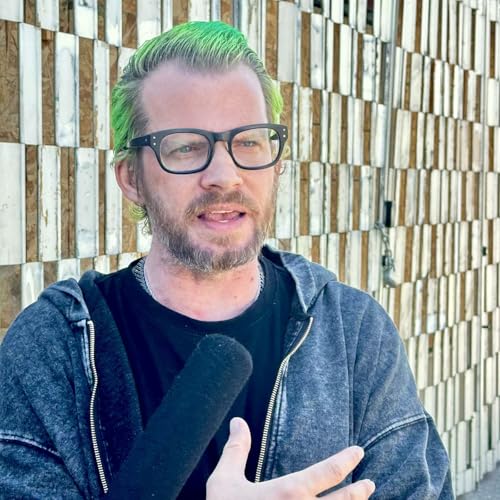In this special episode we venture outside our respective basements to explore a sprawling open-air drug market in Seattle’s Little Saigon neighborhood, which resembles similar drug markets in poor, blue city neighborhoods across the US that have been overrun by the urban fentanyl and methamphetamine crises. Whether it's the Tenderloin in San Francisco, or Kensington in Philadelphia, or Skid Row or MacArthur Park in Los Angeles, the well intentioned, largely permissive policies towards hard drug use that in recent years took root in progressive-dominated bluer cities is coming under increasing challenge, and not just from Trump and the MAGA right.
In the fall of 2024, Oregon rolled back its famous 2020 experiment in full drug decriminalization - as did Vancouver, B.C. earlier last year - after Portland neighborhoods like Old Town were overrun by addicts committing petty crimes to fuel their addictions. Recently installed San Francisco Mayor Daniel Lurie has embraced more aggressive law enforcement and treatment interventions, as part of a nascent shift heralded by the city’s adoption of “Breaking the Cycle” and “Recovery First” policies.
Our guide in Little Saigon is Andrew Constantino, a former heroin addict and outreach worker, whose recent Seattle Times op-ed, “Here’s what I Learned about Addiction at 12th and Jackson,” has struck a nerve in Seattle’s social services provider community. Constantino walks us through the streets of Seattle’s most notorious open air drug market, where methamphetamine, fentanyl, and stolen goods are openly exchanged at all hours of the day and night, and explains why so many fentanyl users are stuck here on the streets, trapped in a cycle of rising hopelessness and despair – due to the fleeting, highly addictive nature of the drug.
With a searing candor, disarming humor and electric cowboy green hair, Constantino rejects many prevailing progressive orthodoxies to offer his own, deeply compassionate yet sharply questioning perspective on addiction, personal autonomy, and opportunities for productive interventions on the mean streets of blue cities.
Our editor is Quinn Waller. Our producer and editor for this episode was Jennie Cecil Moore.
About Blue City Blues
Twenty years ago, Dan Savage encouraged progressives to move to blue cities to escape the reactionary politics of red places. And he got his wish. Over the last two decades, rural places have gotten redder and urban areas much bluer.
America’s bluest cities developed their own distinctive culture, politics and governance. They became the leading edge of a cultural transformation that reshaped progressivism, redefined urbanism and remade the Democratic Party.
But as blue cities went their own way, as they thrived as economically and culturally vibrant trend-setters, these urban cosmopolitan islands also developed their own distinctive set of problems. Inequality soared, and affordability tanked. And the conversation about those problems stagnated, relegated to the narrowly provincial local section of regional newspapers or local NPR programming.
The Blue City Blues podcast aims to pick up where Savage’s Urban Archipelago idea left off, with a national perspective on the present and the future of urban America. We will consider blue cities as a collective whole. What unites them? What troubles them? What defines them?
 52 分
52 分 54 分
54 分 41 分
41 分 2025/09/2254 分
2025/09/2254 分 54 分
54 分 2025/08/1848 分
2025/08/1848 分 2025/08/1049 分
2025/08/1049 分 1 時間 2 分
1 時間 2 分
